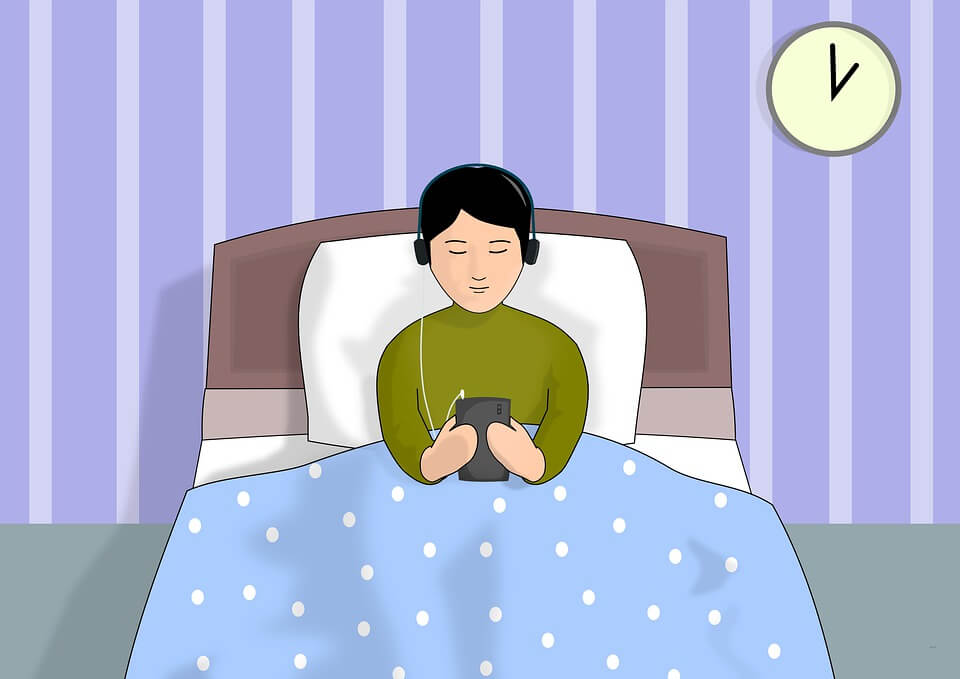Insomnia: a major cause of concern among today’s youth
Sleep is important. The effects of a good night’s sleep are almost magical. It can improve your physical and mental health, make you smarter, more efficient, and even affect your appearance.
Sleep specialists say that sleep is especially important during infancy and adolescence, as it is the time when the mind and body develop the most. Still, sleep is often the first thing people sacrifice, especially adolescents. With the dominance of hustle culture and the growing presence of technology in our lives, sleep habits (especially during the pandemic) have been increasingly ignored. It is not surprising that health experts are becoming more and more concerned about the growing prevalence of insomnia.
To say that insomnia occurs due to technology or poor habits would be a gross over-simplification. Insomnia is a sleep disorder characterized by persistent trouble falling and remaining asleep. This has been held true on multiple occasions. However, whether you are stressed or excited about future events, occupied by certain thoughts, experiencing pain or discomfort which is not letting you sleep, these situations are temporary for most. Sooner or later, exhaustion takes over. When it comes to chronic insomnia, the inability to sleep becomes more permanent. People start getting anxious at bedtime their sleeping chambers become a stimulus for anxiety, and their daily functioning and health suffer.
While the effects of insomnia are serious enough for it to become a concern, what is more, troubling is that insomnia is often a result of, or comorbid with other mental disorders like depression and anxiety. Hence, understanding the causes of insomnia, especially its high prevalence rate in adolescence is an important public health matter. So, why is insomnia becoming common in adolescence? Well, I would argue that insomnia has always been a problem among adolescents. Diagnosing insomnia and accurately recording its prevalence is a tricky matter with still no simple solution in sight. Insomnia has high comorbidity with other disorders – this makes it hard to get an exact number of cases. Rates of adolescent insomnia in studies have ranged between 4% and 39%. Many studies have also found that during adolescence, an individual’s circadian rhythm changes among other things, which makes it unavoidable to lose sleep or change the duration, time, and quantity of sleep. However, today's stress, workload, early school timings, and the constant presence of screens can make these changes more severe.
Studies have found that many teens have trouble falling asleep early, not because they don’t want to sleep but because their brains naturally work on later schedules and aren’t ready for bed yet. During adolescence, the body’s circadian rhythm (internal biological clock) is reset, telling a teen to fall asleep later at night and wake up later in the morning. This change in the circadian rhythm seems to happen because a teen’s brain makes the hormone melatonin later at night than the brains of kids and adults do – melatonin and serotonin are hormones that help regulate a person’s sleep-wake cycle.
The onset of puberty in females leads to insomnia among females. Hormonal changes that take place during menarche can cause insomnia among female adolescents. This is not to say that the onset of puberty in other sexes does not disrupt sleep. While studies have found disruption of sleep patterns with the onset of puberty, this effect has been shown almost 4 times more in females.
The stress of school and early schedules is a big factor in causing insomnia among adolescence. Adolescence is a time of turmoil- both emotionally, physically, and socially. Besides, it is the time when students plan their futures and make important choices. However, despite this, not all students end up developing insomnia. Studies have suggested that many individuals have certain predispositions or vulnerabilities to developing insomnia. Hence, another matter of concern is to identify at-risk adolescents and provide the necessary interventions.
Along with this habits like caffeine, alcohol, or drug intake, too much screen time in the evening, lack of exercise, exposure to violence, socio-economic stressors, etc all contribute to the individual’s sleep patterns and quality. We need healthy sleep habits to be incorporated into classroom discussions as a life skill. While insomnia is a growing concern which impacts various aspects of a person and hence society, it is not impossible to overcome. In fact, with proper awareness, policy interventions, and individual precautions, insomnia is quite easy to tackle.



